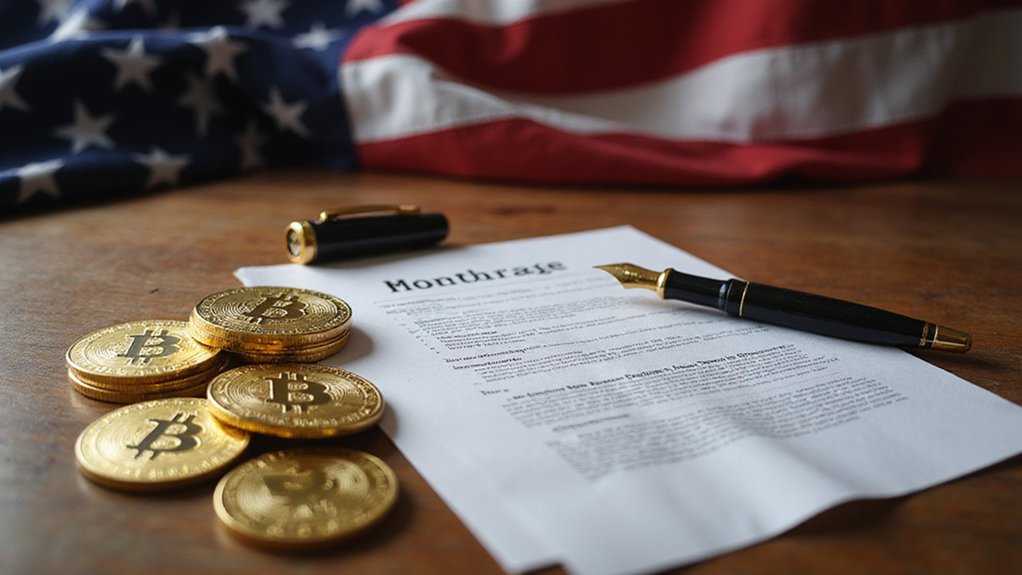How does a president who once dismissed Bitcoin as a “scam” transform into cryptocurrency’s most powerful advocate? Trump’s dramatic pivot materialized through his January 23, 2025 executive order establishing extensive regulatory frameworks for digital assets—a move that sent Bitcoin soaring 40% since his election while positioning America as the self-proclaimed “crypto capital” of the world.
From Bitcoin skeptic to crypto champion: Trump’s regulatory pivot triggered a 40% surge while crowning America the digital asset throne.
The administration’s Strategic Bitcoin Reserve, announced March 6, represents perhaps the most audacious monetary experiment since Nixon abandoned gold convertibility. This digital Fort Knox aims to accumulate one million Bitcoins, creating a national cryptocurrency stockpile analogous to petroleum reserves.
The irony is palpable: a traditional politician embracing decentralized currency while simultaneously centralizing its control within federal coffers.
Personnel changes telegraph serious intent. Gary Gensler‘s departure on January 20 eliminated crypto’s most formidable regulatory adversary, replaced by Paul Atkins—whose consulting firm conveniently advises crypto companies through Patomak Global Partners.
This revolving door between industry and regulation would typically raise eyebrows, yet crypto enthusiasts celebrate the capture as liberation from enforcement “tyranny.”
David Sacks, the newly-minted “Crypto and AI Czar,” chairs a working group comprising Treasury Secretary, Commerce Secretary, and other cabinet-level officials. Their mandate involves soliciting private sector input while dismantling Biden-era restrictions deemed innovation-stifling. The working group must deliver a comprehensive regulatory framework report to the President within 180 days, establishing the timeline for America’s crypto transformation.
The cryptocurrency market’s total valuation now exceeds $1 trillion, vindicating (at least temporarily) the administration’s deregulatory gambit.
Trump’s domestic mining pledge represents economic nationalism applied to digital assets—ensuring American computational power secures blockchain networks rather than relying on foreign operations. Critics highlight Bitcoin’s fixed supply of exactly 21 million coins, raising questions about long-term scalability for national reserve strategies.
This vertical integration strategy aims to control both regulatory environment and production infrastructure, maximizing geopolitical leverage in emerging digital finance competitions. The administration’s approach could significantly benefit stablecoins, which serve as crucial bridges between traditional finance and cryptocurrency markets by maintaining price stability through asset backing.
The broader implications extend beyond speculative trading profits. Streamlined compliance processes and transparent regulatory standards could genuinely facilitate mainstream crypto adoption, particularly in mortgage and lending markets where blockchain-based verification systems promise efficiency gains.
Whether this regulatory rollback produces sustainable innovation or merely inflates another speculative bubble remains the trillion-dollar question confronting both investors and policymakers steering this unprecedented monetary experiment.









